Prison servers are some of the most popular game modes in Minecraft: Every day, tens of thousands of people wade through anarchy, murder and lots of grinding. It is a dystopian experience unlike anything I’ve ever experienced in a video game.
Illustration: Sam Woolley
Unlike most Minecraft servers, where you can jump into the action right away, prison servers start you out at the lowest rank with nothing more than a pick and maybe some starting gear. You can earn money and rank up by mining stone, ore or gems from mines, which are open and usually PvP safe zones. After you’ve grinded your way through a few dozen layers of stone, you can sell your earnings and — if you’ve worked hard and saved all your gold bars — rank up. Ranking up gets you access to some perks, depending on the server, though until you get to the very highest ranks all it means is that you have access to a new mine with more profitable ores. If you can make it to the top, you’ll end up with a special title, chat privileges, lucrative resources and possibly a spot on the leaderboards. It’s a long way up.
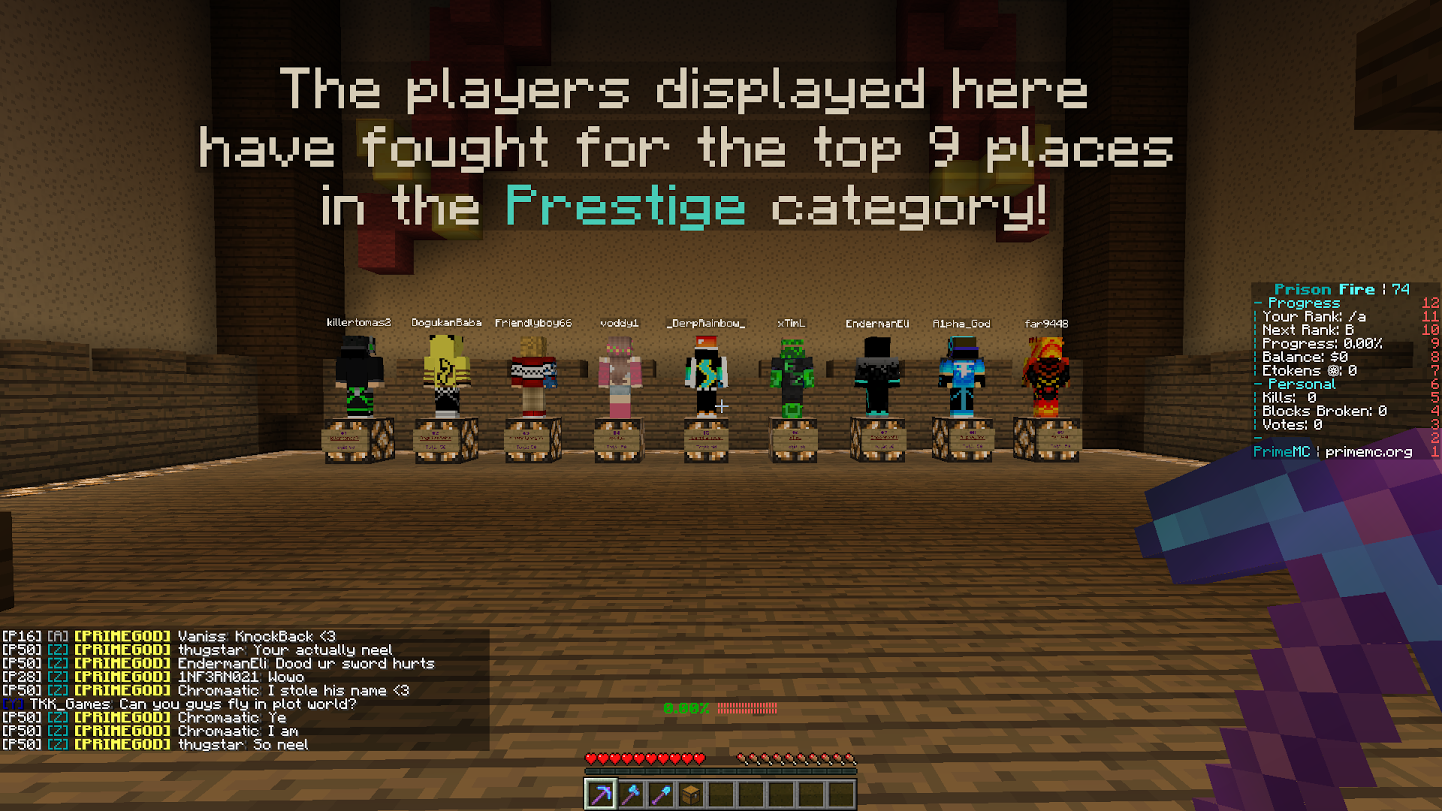
The ranks, it’s worth mentioning, are gruelling. The first few are designed to go by quickly, sometimes in just a few minutes or seconds, but once you get to the middle ranks, it can take hours or even days of non-stop grinding to make enough in-game currency to advance. The grinding itself isn’t terribly compelling, as the ‘mines’ all seem to be designed with the same template: A big cube of stone and ore surrounded by unbreakable blocks that resets every few minutes.
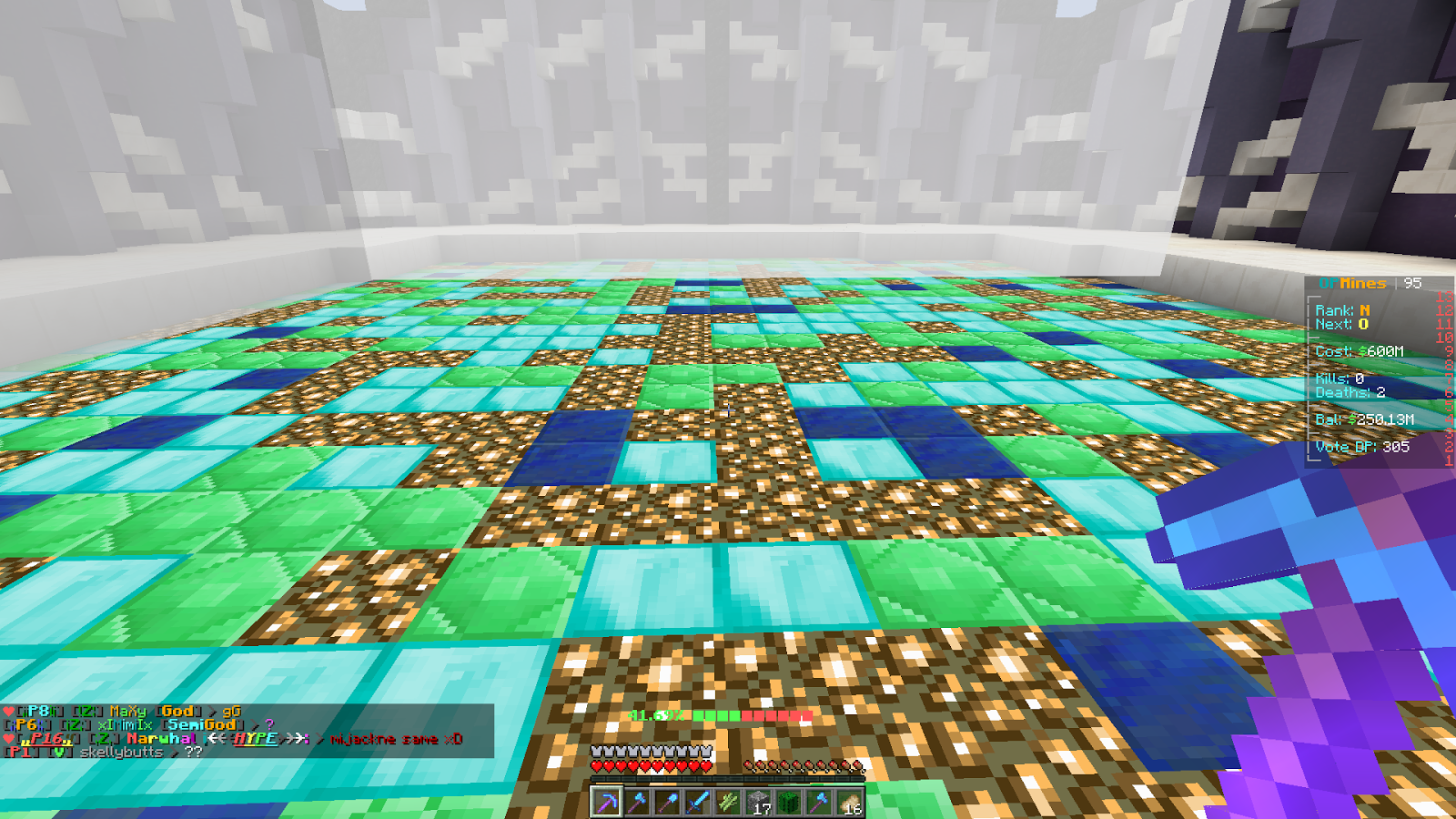
Most servers throw in a mix of worthless blocks like sand or clay to mix it up, and I even encountered one that had spider webs strewn throughout the mine, just in case you were starting to get in the rhythm of things. I haven’t done the maths with any great precision, but the progression on most servers seems to be exponential, and the more lucrative blocks that you find in more advanced mines don’t do a lot to mitigate the rapidly advancing cost of ranking up.
There is one way to turn the drudgery of ranking up like a common plebeian into something a lot more enjoyable: Donating. Prison servers grant advantages to players who shell out real-world cash for advancement. Some of these advantages are as minor as better items and access to exclusive mines, but more substantial donations garner advantages like flight, picks that can mine a whole section of blocks at a time and avatar flair. These perks start out relatively inexpensively: Five dollars can give you access to ‘donator’ privileges like better picks, storage and renewable kits. Buying your way to the top rank, however, can cost hundreds of dollars.
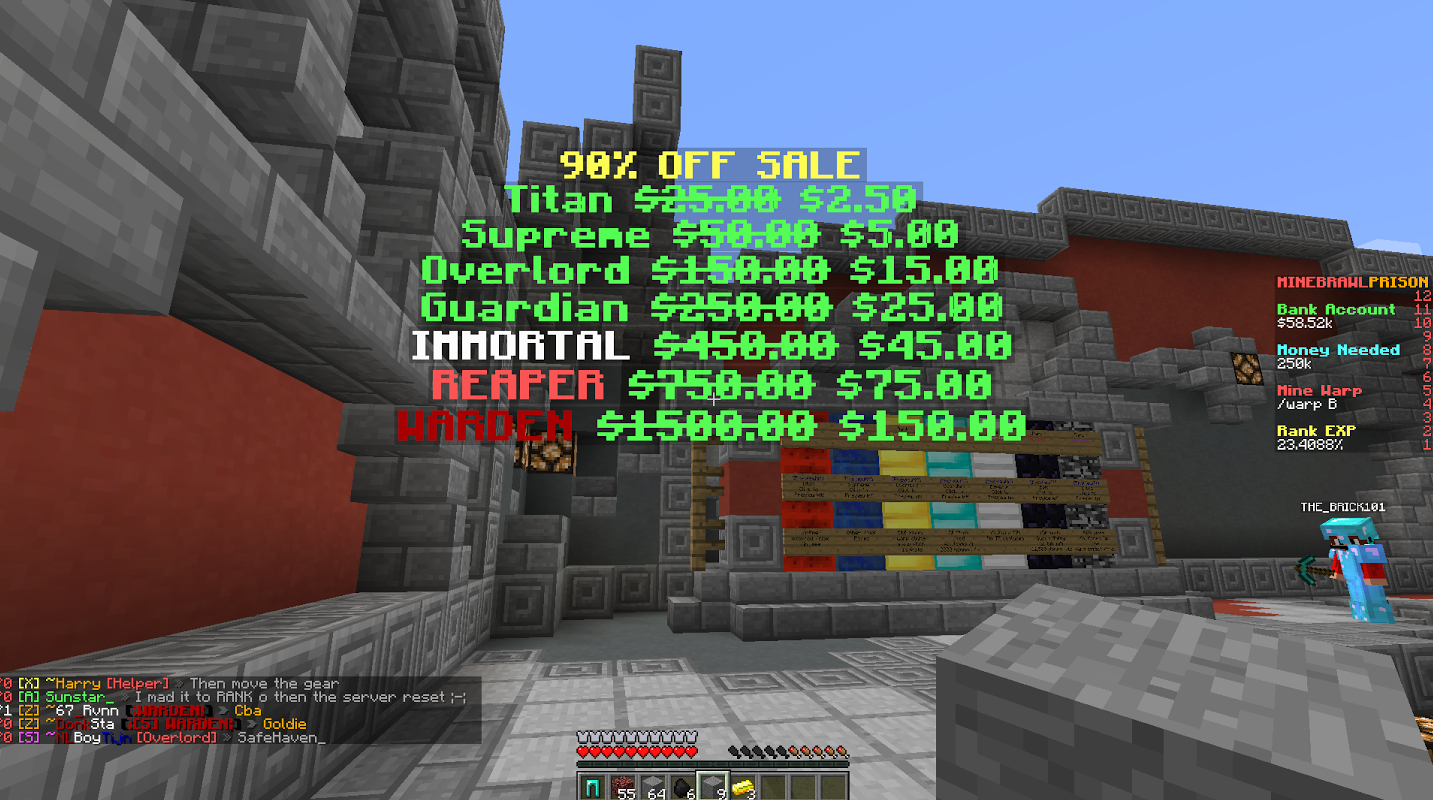
From the moment you log in, every input you receive is geared toward pushing you to donate. Flashing messages appear reminding you of donator perks, upcoming sales, auctions, sweepstakes or giveaways that are going on at the moment. These messages are almost overwhelming at times. They make prison servers feel less like being incarcerated and more like visiting a casino.
Once you’ve made your fortune in the mines, you can spend your hard-earned cash buying gear to compete in the PvP arenas. Until I learned to recognise the places I shouldn’t go, I managed to repeatedly wander into these PvP zones, where I was summarily executed by flying players who appeared to be firing nuclear warhead-tipped arrows. There is no equity of any sort here, no attempt to level the playing field for new players — the richest and most established players dominate these spaces, wielding god-like power to lay waste to their enemies (when they can be bothered to compete). In addition to prestige and bragging rights, surviving the arena can get you free loot from fallen foes, special titles, unique resources (at least one server offers bounties on player heads) and a chance to advance on the leaderboards. Competition for the best items and advantages is fierce, with the richest players aggressively bidding (with in-game currency) on overpowered gear.
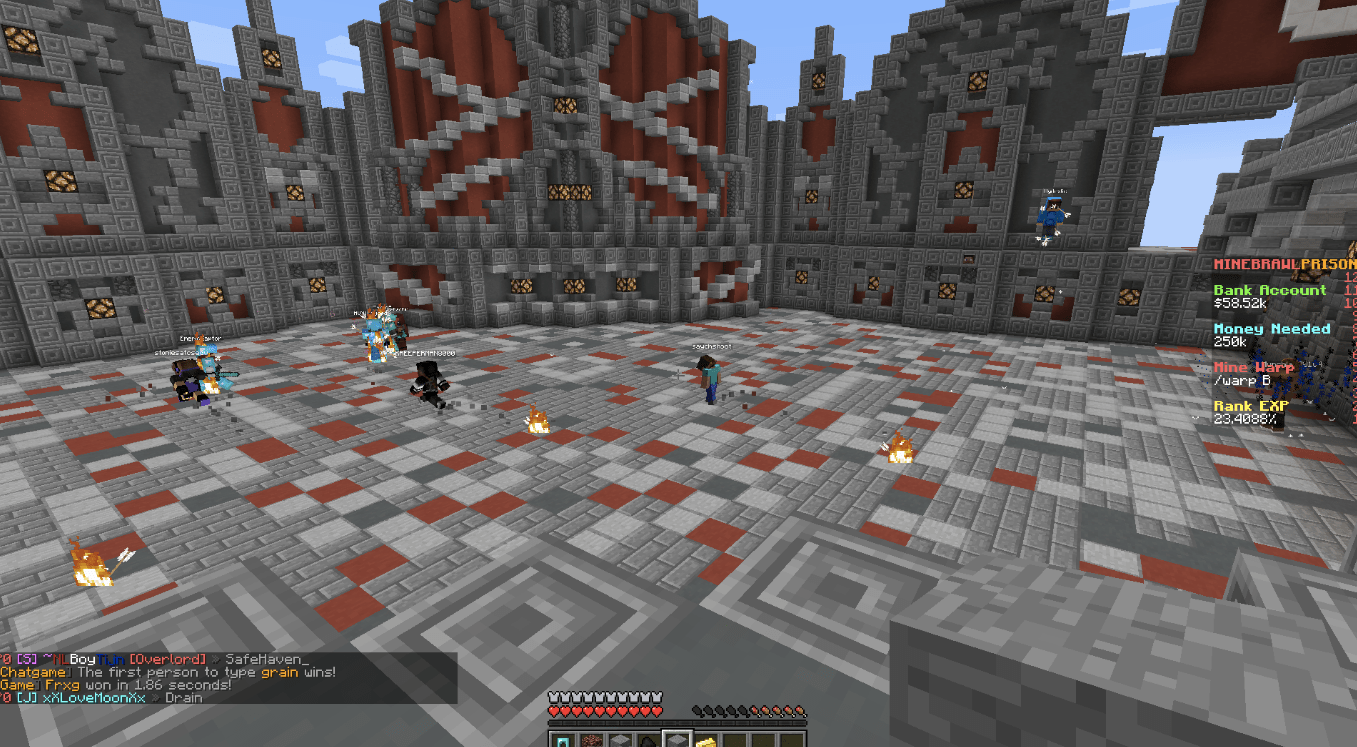
If PvP isn’t your speed, some servers also offer plots that you can build on and decorate, once you’ve saved up enough from mining. You can even set up shops and sell your extra gear and items to other players, or simply show off your wealth by building statues from diamond blocks or something equally ostentatious.
In this sense, prison servers aren’t so much giving you a “prison” experience as, well, a sort of savagely objectivist one. Prison servers present a world where the richest wield essentially unlimited power and everyone else strives to join their ranks. This is reinforced not only by the in-game mechanics of the mines, but also by the donator structure that makes it essentially impossible to advance and compete without opening up your wallet.
Prison servers remind me a lot of the heady early days of Ultima Online or Runescape, where you could pretty much expect someone more powerful to come along and take your stuff — but it is interesting that prison servers have stripped away all of the trappings of the genre and reduced the formula to its constituent parts. I mean, sure, all you’re doing in most competitive MMOs is grinding followed by fighting, but the visual and procedural gloss that we place over those actions are what keeps us playing. Prison servers have done away with all that pretence.
Snitches get stitches
I wanted to try to get a handle on what made these servers so popular, but when I reached out to the admins and mods of several popular servers, I was thoroughly rebuffed. At first I thought that the mods and admins — generally teenagers with superiority complexes — were just being rude (one representative told me they had “more important things to worry about”). But the more likely situation is that they didn’t want to draw attention to themselves. If you don’t remember, Mojang issued an infamous rule change back in 2014 to crack down on servers that were cashing in with microtransactions and “donations”. Certain segments of the community revolted pretty aggressively against this, but it’s generally been seen as good for the game, as a lot of these servers were predatory and exploitative.
Given that every prison server I visited allowed players to purchase in-game advantages (and more often than not, a lot of in-game advantages) I’m guessing that they’re all in violation of the Mojang EULA. It’s been two years since the rule clarification, but since Mojang recently hired a whole crew of “Brand Enforcers” to start pursuing rule-breakers, the writing may be on the wall.
This is one of the few ways that prison servers actually are kind of like a prison: They’re aggressively authoritarian. The admins set the rules and the rules can be draconian, the punishments equally so. Chat is often restricted (unless you’re a donor) and certain topics, like discussing other servers or disparaging the server you’re on, are completely off-limits and dealt with swiftly and severely. Other offences, like advertising in any form, ‘griefing’, chat-spamming or sometimes just being a nuisance will quickly earn you a temporary or permanent ban. This isn’t entirely a bad thing, but the definitions of certain bannable offences can be vague and the administration of these bans is left entirely to individual moderators, leading to frequent complaints of overreach and abuse. This attitude isn’t unique to prison servers; most Minecraft servers protect their reputation and their brand aggressively, but there is some irony here.
Players, on the other hand, were plenty effusive about why they play on prison servers, and they were more than willing to talk about why they chose to spend their time there. Most players I spoke to told me that they liked the sense of accomplishment or achievement. Several players even said that they liked the grind, and that they preferred servers where you started out with less, because it made it more rewarding when they finally reached the next rank.
There wasn’t any guile or self-deception there: The players knew that they were grinding, and that it was gruelling, and that was just fine. Any complaints that arise tend to be about other players, especially hackers and cheaters, which are pretty commonplace on any PvP server. Interestingly, there didn’t seem to be any grumbling about the pay-to-win model — players who didn’t have the cash to buy their way into the top ranks either washed out of the server or stuck around hoping for handouts or an opportunity down the road to make their way into the upper echelons. Occasional generosity from wealthy players and lottery-style games seems to be what keeps these players engaged, but there really isn’t a path to the highest ranks without paying real money. This model, which would cause the greater gaming community to shake the heavens with outrage if it ever showed up in games like Overwatch or CS:GO, is apparently unremarkable to the prison server community.
A big draw for of prison server seems to be the hierarchy itself. After all, you can join any number of servers and start PvPing right away without having to grind your way up the ranks first, and there are better ways to grind. The main draw seems to be the potential to become the ‘big dog’ on the server and to achieve high status — something that’s reinforced on most servers by giving high-ranking and high-spending players chat advantages, tags and unique titles. When a high-ranking player types something into the prison server chat, it’s impossible to ignore.
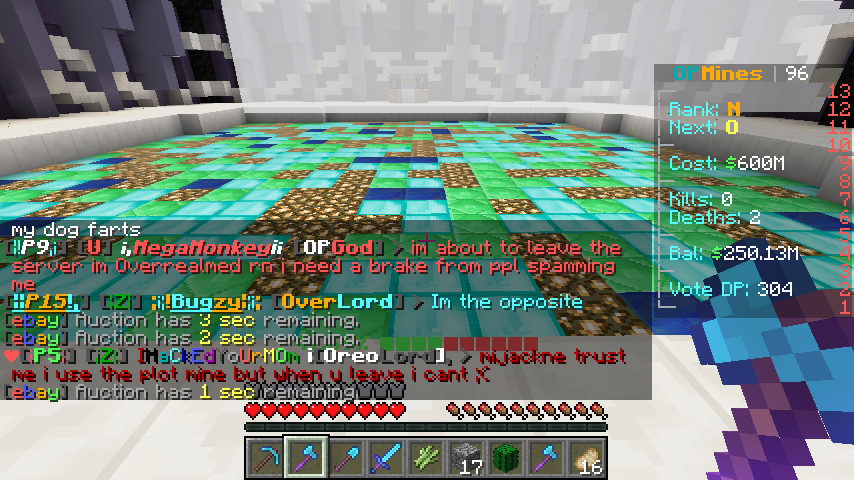
Powerful players can’t walk around with impunity and punish people who are beneath them like actual power-hungry prison guards, but with chat, gear, wealth advantages and in some cases server permissions, they can do just about everything up to that.
After spending over a week mining and crawling up the ranks, I decided that prison servers were not for me. And yet, if I’m being honest, watching my numbers go up while I played was still enjoyable. There was something gratifying about watching new players; they reminded me of how far I had come. It’s not difficult to see how someone engaged with the community, who had already invested money in a server, might also dedicate serious time and effort working their way up through the ranks. Barring some intervention from Mojang, I imagine these drudges will keep on mining and fighting, day in and day out, dreaming of one day becoming the warden.
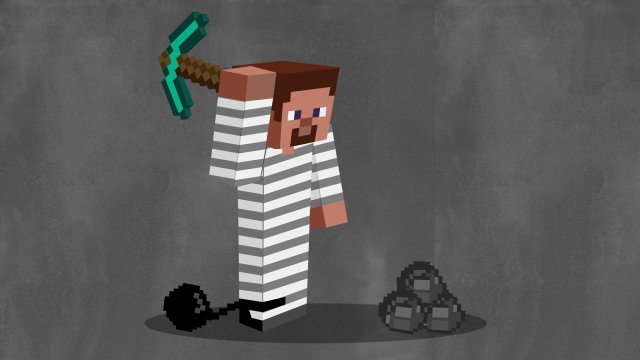
Comments
3 responses to “Inside The Grim World Of Minecraft’s Prison Servers”
“There wasn’t any guile or self-deception there: The players knew that they were grinding, and that it was gruelling, and that was just fine.”
Are they really aware though? Reading this I was reminded of a great article I read a month ago about ethical design and how apps can “hijack” people’s behaviour: https://medium.com/swlh/how-technology-hijacks-peoples-minds-from-a-magician-and-google-s-design-ethicist-56d62ef5edf3#.ag8wekckj
There’s a lot to unpack there so I’m not going to try to do an interpretation of it applied to these servers, but to me it seems like it fits pretty well.
Thanks for sharing – that was a great read.
so, kinda like real life then?
Grinded? GRINDED?
I grind my resources. I ground out all those levels.
FML